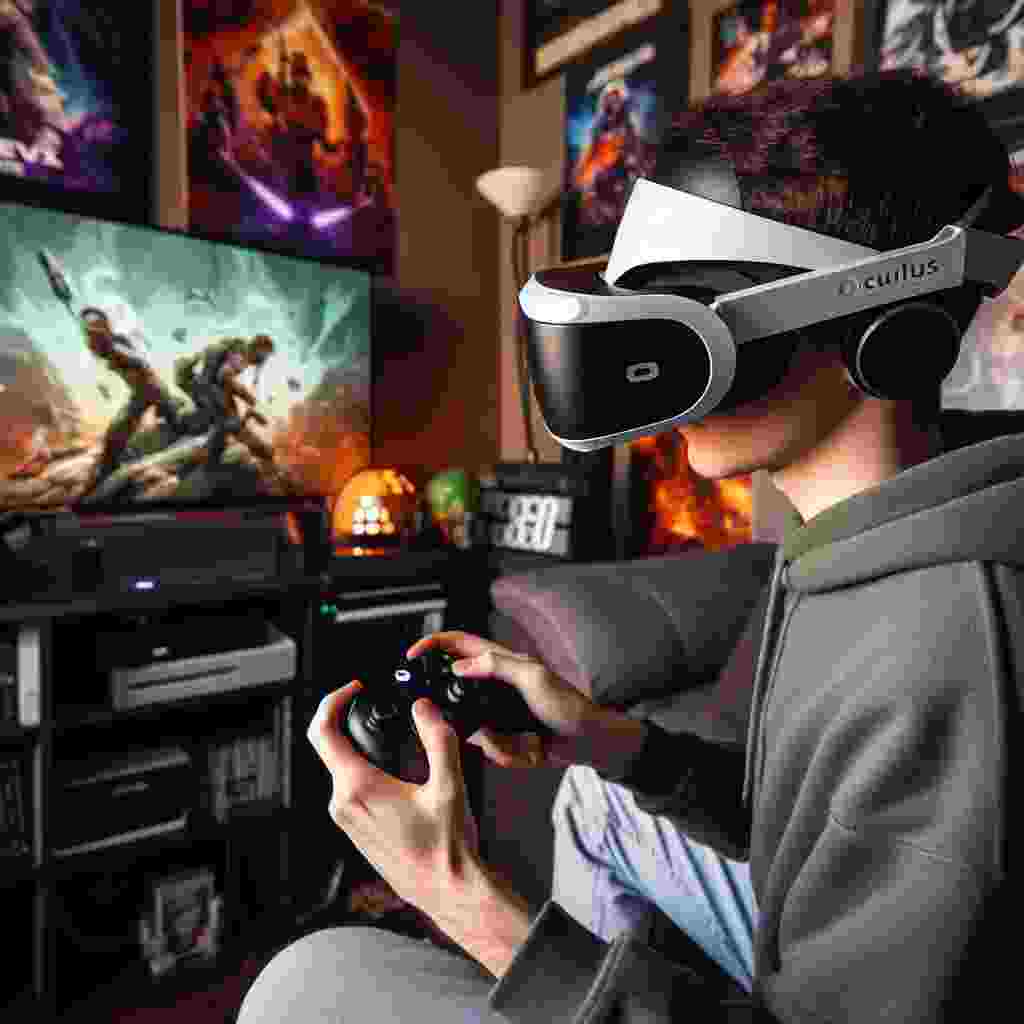Microsoft has yet to introduce an official VR headset for Xbox consoles. Nonetheless Microsoft possesses experience in the VR domain notably with its HoloLens mixed reality headsets.
It’s plausible to envision Microsoft potentially enabling compatibility with Xbox Series X|S consoles instead of developing a dedicated headset solely for the console a direction Sony has taken with PSVR.
From a technical standpoint the Xbox is undoubtedly capable of running VR games.
However when addressing this matter Gaming CEO Phil Spencer has raised key concerns that shed light on why the company has not yet unveiled a VR headset for Xbox consoles.
- What is the difference between VR and mixed reality?
- What is the current state of VR technology?
- What are some popular VR games available on other platforms?
- Is VR Capability Included in Xbox Live Subscription for Netflix Viewing?
- What are some of the challenges that Microsoft would face if it were to develop a VR headset for Xbox consoles?
What is the difference between VR and mixed reality?
Virtual Reality (VR) and Mixed Reality (MR) are two distinct immersive technologies frequently subject to confusion.
VR immerses users in a wholly artificial digital environment essentially replacing their real surroundings with a computer-generated space. The VR market is projected to attain a value of $184.66 billion by 2026.
In contrast MR combines elements of both Augmented Reality (AR) and VR resulting in a unique experience. With MR virtual objects are integrated into the real world enabling users to interact with them in real-time.
This technology finds extensive use in industrial settings particularly for training and simulation purposes.
What is the current state of VR technology?
The present state of VR technology is still in its nascent phase but is rapidly progressing. It’s projected that the VR market will grow to a value of $184.66 billion by 2026.
Presently numerous companies are producing their own VR headsets though they haven’t achieved the same prominence as other entertainment products.
The most popular VR headset brands today include Oculus Rift and Sony PlayStation VR.
However there are notable challenges that need to be addressed to ensure the success of VR. Among these one of the most substantial hurdles is the necessity for powerful devices to complement the headsets.
High-performance computers and smartphones are essential to deliver the anticipated effects.
Aesthetics also pose challenges as contemporary VR headsets often share a bulky and somewhat unconventional design. Manufacturers must explore ways to enhance the aesthetic appeal of these devices.
What are some popular VR games available on other platforms?
There are several popular VR games available on various platforms:
- “Half-Life: Alyx” is a first-person shooter set in the Half-Life universe where you assume the role of Alyx Vance and battle the alien Combine. This game is exclusive to Steam VR and requires a PC VR headset.
- “Beat Saber” is a rhythm game where you slice blocks with lightsabers in sync with music. It can be played on Quest 2 PSVR 2 Steam VR and Oculus Rift.
- “Superhot VR” is an action game where time only progresses when you move and you must evade bullets and eliminate foes using various weapons. It’s accessible on Quest 2 PSVR 2 Steam VR and Oculus Rift.
- “Star Wars: Tales from the Galaxy’s Edge” is an adventure game that lets you explore the planet of Batuu and interact with characters and creatures from the Star Wars universe. You can experience this game on Quest 2 and PSVR 2.
- “Resident Evil Village” is a survival horror game where you confront werewolves vampires and other terrifying entities in a remote European village. It’s available on PSVR 2 with a free update.
Please note that these games are compatible with specific VR platforms so make sure to have the appropriate hardware for the best gaming experience.
Is VR Capability Included in Xbox Live Subscription for Netflix Viewing?
Yes, Xbox Live for Netflix viewing includes VR capability. Xbox Live Gold members can stream Netflix movies and TV shows in virtual reality using their Xbox One console. This feature allows users to enjoy an immersive viewing experience, making entertainment more engaging and exciting.
What are some of the challenges that Microsoft would face if it were to develop a VR headset for Xbox consoles?
If Microsoft were to venture into developing a VR headset for Xbox consoles it would face several significant challenges:
- Cost: VR headsets are relatively expensive devices demanding high-end hardware and software for smooth performance. Creating a VR headset for Xbox would necessitate a substantial financial investment from Microsoft. Moreover to attract consumers Microsoft would need to implement a competitive pricing strategy. Mass adoption of VR technology as noted in one source typically requires a comprehensive solution (CPU GPU and HMD) priced at $1000 or less.
- Content: VR headsets thrive on engaging and diverse content to keep users satisfied. Crafting VR games and applications for Xbox consoles would entail additional resources and expertise from Microsoft and its partners. This process could also introduce compatibility and optimization challenges. Microsoft’s collaboration with companies like Valve and HP for products like the HP Reverb G2 VR headset as mentioned in another source hints at its interest in creating VR content for PC platforms. However this does not necessarily guarantee the development of VR content for Xbox consoles.
- Demand: VR headsets remain a niche product appealing to a limited audience. Microsoft would need a comprehensive understanding of market demand and consumer preferences for VR gaming before investing in a VR headset for Xbox. According to another source it seems highly unlikely that Microsoft will commit to an Xbox VR headset for Xbox Series X|S particularly considering the console generation’s progress and the absence of clear support for VR technology.
Navigating these challenges would be essential for Microsoft’s success in the VR headset market for Xbox consoles.
